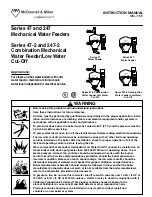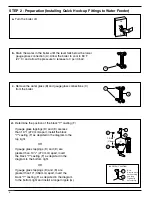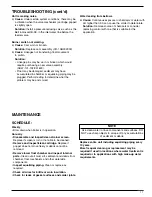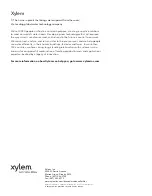
8
STEP 7 - Testing and Inspection
V
CLOSING
LEVEL
INSTALLATION COMPLETE
C.
Line
Load
N.
N.C.
O.
C.
Load
or
Burner
Circuit
Low
Water
Alarm
N.
N.C.
Neutral
120 V.A.C.
or 24 V.A.C.
Supply
HOT
O.
b.
Based on the mode of operation required for
your application, complete the appropriate
corresponding step.
When the water feeder is used as a low water
cut-off switch and/or a low water alarm, connect
the "Hot" wire to the "Common" contact. Using a
flat head screw driver, tighten the screw. Connect
the low water alarm to the “Normally Open” contact
and tighten the screw. Connect the burner or load
circuit wire to the “Normally Closed” contact and
tighten the screw.
OR
When the water feeder is used as a pilot switch
to a holding coil of a motor starter or relay,
connect as shown in the diagram to the right.
Low water cut-off switch and/or low water alarm
Pilot switch for motor starter or relay
The feeder should be blown down after initial installation
before leaving site. It should also be blown down as
recommended in the Maintenance section of these
instructions.
• Burner should be on and water level above 'closing
level' of feeder.
•
Slowly
open the water feeder blow down valve 'V'
which will lower the water level in the float chamber.
As water flows out the blow down pipe, you should
begin to hear the feeder valve open.
• If the feeder has a #2 switch, the burner should stop.
• Close the water feeder blow down valve 'V'. The water
level should return to a safe operating level and the
burner should turn on.
To prevent serious personal injury from steam pipe
blow down, connect a drain pipe to the control
opening to avoid exposure to steam discharge.
Failure to follow this caution could cause personal
injury.
!
CAUTION
Blow Down of Feeder






























